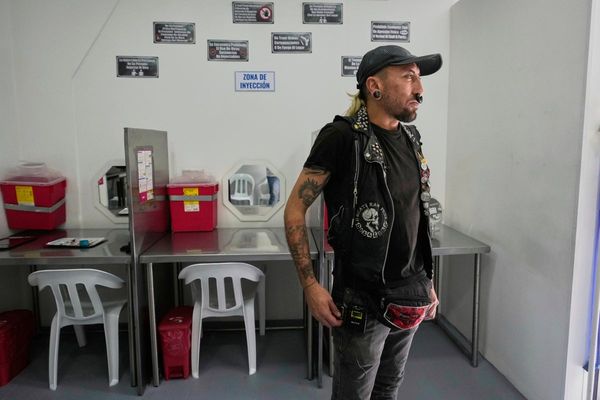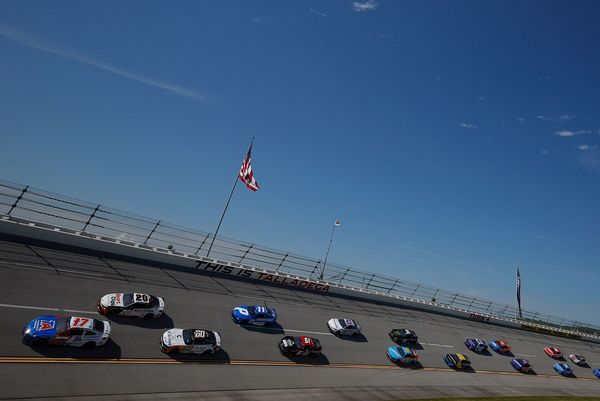
When a train on Hong Kong’s metro is speeding along its route slightly bumpier than usual, Ravi Ravitharan’s phone buzzes in Melbourne – at all hours of the day.
“My phone is next to my bed when I sleep because we will get calls in the middle of the night,” he says.
It might sound like the obsession of a devout trainspotter but Ravitharan and the Institute of Railway Technology at Monash University, of which he is a director, have become critical cogs helping some of the world’s most impressive public transport networks and supply chains function.
It’s why when Dubai’s first metro line started shaking, its operators called Ravitharan.
“You can’t not be there when they need you but it’s also exciting when clients like this need your help,” he says.
The institute has been contracted to install its specialist monitoring bogies – the structures housing wheels and suspension underneath a carriage – with sensors on rolling stock that is in use by public transport authorities, freight operators and mining companies around the world.
The researchers have developed technology which can detect the most subtle of changes in variables such as bounce, vibration or jerk of a carriage, well before it becomes noticeable to passengers.
The monitoring instruments, which are fitted to select carriages across a network, can also include cameras and lasers that detect changes in the condition of rail tracks.
In detecting such changes in real time, the operators know well in advance that a more significant issue is about to occur, allowing for proactive maintenance that is far more efficient.
For a high-capacity public transport system such as Hong Kong’s Mass Transit Railway, this can mean avoiding the need to implement track speed restrictions – crucial in achieving on-time performances and moving millions of commuters around the city seamlessly in peak hour.
Watching the wheels go round and round
The mining industry also relies on the institute’s technology.
Detailed monitoring of wagon stability and track condition can provide the warnings necessary to prevent a 3km-long freight train carrying minerals through the Pilbara desert from derailing, which can easily cost miners $15m a day in lost productivity.
When a runaway BHP train with 248-wagons of iron ore was forced to derail in the Pilbara in 2018, industry analysts estimated it could cost the company up to $55m a day its tracks were out of use.
The value of such information has long been accepted by the mining industry. The institute was founded as an arm of BHP before it was spun off into Monash University as a separate entity in 2000.
It has since gained other big players, such as Rio Tinto, as clients.
“We’re not doing research for the sake of research, it’s about being relevant to the rail industry,” Ravitharan said. “Australia is a big country and we rely on our railways, and we should rely on them more because if you’re talking about net zero and carbon neutrality, you cannot beat rail.”
In the 25 years since splitting from BHP, the institute has built a team of more than 100 experts including engineers, scientists, technicians and researchers, many of whom are students at the university.
Foreign focus
While there’s no train that runs direct to Monash’s Clayton campus, if you’re walking past a large warehouse-style shed housing the university’s railway institute’s labs, you can hear a loud hum, as if a train was grinding against track.
Inside, a section of track from an overseas rail operator is fitted to a fatigue rig to mimic the kinds of pressure the track would experience. That deliberately wrecked chunk of track will then be compared with a control section at the in-house metallography lab.
Examining the cross-sections of the tracks under microscopes will reveal the faintest of fractures, which to an operator, can save huge amounts of money and prevent further splintering.
“The work we do here helps to extend the lifetime of asset by years, and that can be valuable.”
In the institute’s main office, Ravitharan sits underneath several large screens displaying maps with various moving dots.
One shows the morning rush of trains in Hong Kong, with a service flashing as it passes Kowloon Bay. On the next screen, the red dirt of the Port Hedland, and next to that, one of the Hunter Valley region.
Notably absent, however, is a map of any major Australian city.
Looking overseas for local expertise
For many train enthusiasts, it may be a surprise to hear that global corporations or megacities would rely on Australia for rail expertise.
Aside from a few glitzy new inner-city lines or over-budget freight alignments, Australia is broadly considered a laggard on publicly owned rail, a nation of largely steam-age tracks with slow services and ageing infrastructure.
Despite this, Ravitharan has developed the institute’s reputation.
Its clients, such as Hong Kong’s MTR, are the envy of the world. It consistently achieves an on-time performance above 99.9%, and its eye to efficiency – as well as its business model of developing property above stations – has allowed its operating company turn to a profit, a rarity in the traditional loss-making-for-public-benefit world of public transport.
While much of the world has cottoned on to the centre’s ability to help trains run more efficiently, it’s Australian transit authorities that have proved the most resistant to local innovations, Ravitharan concedes.
That resistance comes at a time when various state governments are investing hundreds of billions in new rail lines – including on Sydney Metro and Melbourne’s Suburban Rail Loop – by seeking foreign rail expertise, mostly from Europe, to build, operate and guide the systems.
Hong Kong’s MTR corporation operates Melbourne’s train network, and Sydney’s new Metro line, while the future metro line at Western Sydney airport will be operated by a consortium including France’s RATP, with rolling stock constructed by the German company Siemens.
Meanwhile, in New South Wales, transport department leaders are routinely plucked from England, while a reliance on overseas rolling stock production has led to multiple errors and years-long delays for heavy rail, intercity and light rail.
Ravitharan says the tradition of public transport providers looking overseas for expertise is part of a broader problem.
One of the few local public transport projects the institute has won government grants for, was to develop a Lego-likescalable solution to make Melbourne’s tram network wheelchair accessible, after the Victorian government missed its accessibility targets.
Ravitharan says it can be tiring trying to convince various state transport departments of the worth of his work.
One of the institute’s monitoring bogies has been installed on a passenger train in Queensland – allowing it to check track conditions after flooding – but only after some cajoling. Still, just one been installed, whereas in Hong Kong there are dozens across the network.
“We had to show them how it works in Hong Kong before Queensland Rail would use it here,” he said. “It’s local technology that is commercialised overseas, then they pay twice to bring it back here.”
‘Why do we accept that trains will suddenly stop running?’
Australians ultimately suffer from the authorities’ adversity to local expertise in favour of multinational consulting firms and importing foreign technologies, Ravitharan says.
“In Hong Kong, a two-minute delay is a major problem for them but, in Australia, if a schedule fails and there are major delays, there’s only a slap on the wrist for the operator.
“If something falls on a railway track in Australia, or a signal breaks, why do we accept that trains will suddenly stop running?”
This attitude of “chasing our own tail”, according to Ravitharan, means longer periods that trains in Australian cities are down due to maintenance, compared with similar overseas networks.
Beyond the lack of investment in proactive maintenance is a reluctance to push limits. In Sydney train line closures last longer than necessary, experts have said, due to works noise restrictions and a desire to avoid higher overnight labour costs.
In stark contrast, Munich’s S-Bahn main line closed for just two weekends in 2017 when it needed thorough maintenance; while on New York City’s subway (which runs 24/7), maintenance periods allow for partial services to continue.
Ravitharan believes a better mindset is that higher upfront costs – either pre-emptive maintenance to avoid lengthier outages or greater willingness to spend upfront on labour for intensive maintenance periods to avoid productivity losses – can pay off in the long run.
“In Australia, rail is run very conservatively,” he says. “As soon as you put forward an innovation, it’s regarded as a potential problem. We only invest to fix a problem.
“BHP and Rio Tinto, they want to keep their costs down and increase profits. In Hong Kong, they want their communities to move around. They know the cost of trains not running, and that spending on the innovation can actually be cheaper for you.”







